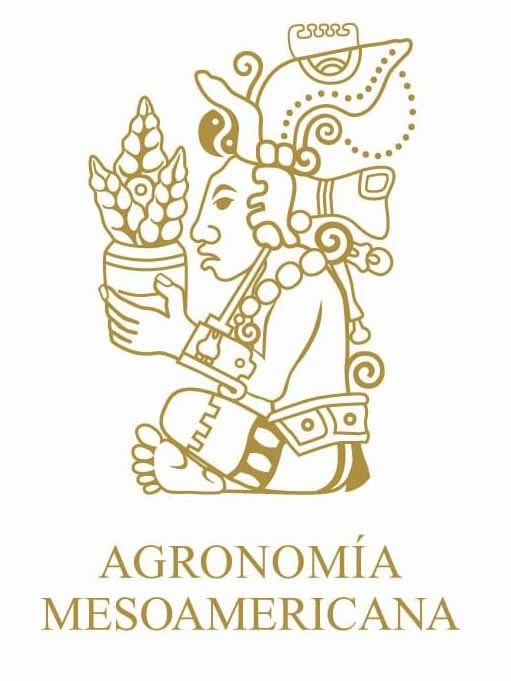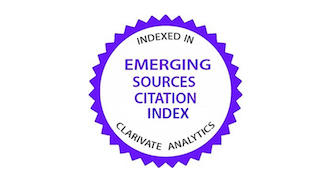Actividad de enzimas antioxidantes de la pulpa madura e inmadura de Vasconcellea candicans (A. Gray) A. DC 1864 (Caricaceae)
DOI:
https://doi.org/10.15517/4m2rxg37Palabras clave:
catalasa, peroxidasa, superóxido dismutasa, glutatión sulfhidril transferasa, fruto del mito, papaya andinaResumen
Introducción. La determinación de sustancias antioxidantes de los frutos nativos es importante para su incorporación en la dieta y mejor aprovechamiento y conservación. Objetivo. Evaluar la actividad de las enzimas antioxidantes catalasa (CAT), peroxidasa (POX), superóxido dismutasa (SOD) y glutatión sulfhidril transferasa (GST), de extractos acuosos de pulpa madura e inmadura del fruto de Vasconcellea candicans (A. Gray) A. DC (“mito”, “papaya andina”) y relacionarlas con su concentración de polifenoles totales (PT). Materiales y métodos. Se extrajo la pulpa de cuatro frutos, maduros e inmaduros de “mito” provenientes de Santo Domingo de Los Olleros, Huarochirí, Lima, Perú, la cual fue procesada durante marzo a diciembre del año 2023. La obtención de la muestra se realizó por extracción acuosa de 20 g de pulpa en relación 20:80 en agua a 8 °C por 15 días (técnica de maceración en frío), usándose el sobrenadante luego de centrifugación. La determinación de PT se hizo por espectrofotometría usando ácido gálico como estándar. La determinación de la actividad específica de las enzimas se realizó mediante espectrofotometría usando los estándares respectivos. Se aplicaron estadísticas no paramétricas utilizando el software estadístico R. Resultados. Los frutos de V. candicans presentan diferencias marcadas entre estados de madurez, particularmente en contenido proteico y en la actividad de enzimas antioxidantes como CAT, SOD y GST. Las correlaciones bioquímicas son más pronunciadas en frutos maduros, indicando una reorganización funcional de los componentes antioxidantes durante la maduración. Conclusiones. Los resultados sugieren que la actividad de CAT, junto con los niveles de polifenoles, podría emplearse como un indicador bioquímico del grado de maduración del fruto, que podría servir para determinar y optimizar el tiempo de vida útil poscosecha del fruto.
Referencias
Acosta Villalba, M. M., Ramírez Cabrera, L. N., & Espino Espino, R. A. (2015). Efecto hipoglucemiante de extracto etanólico del fruto de Vasconcellea candicans (Kerco) en ratones con hiperglucemia inducida por aloxano. [Tesis de pregrado, Universidad Nacional San Luis Gonzaga de Ica]. Repositorio institucional de la Universidad Nacional San Luis Gonzaga. http://repositorio.unica.edu.pe/handle/20.500.13028/2246
Athesh, K., Karthiga, D., & Brindha, P. (2012). Anti-obesity effect of aqueous fruit extract of Carica papaya L. in rats fed on high fat cafeteria diet. International Journal of Pharmacy and Pharmaceutical Sciences, 4(5), 327–330. https://innovareacademics.in/journal/ijpps/Vol4Suppl5/5050.pdf
Aubert, C., Günata, Z., Ambid, C., & Baumes, R. (2003). Changes in physicochemical characteristics and volatile constituents of yellow- and white-fleshed nectarines during maturation and artificial ripening. Journal of Agricultural and Food Chemistry, 51(10), 3083–3091. https://doi.org/10.1021/jf026153i
Auquiñivin Silva, E. A., & Paucar Menacho, L. M. (2020). Estudio comparativo de las características fisicoquímicas y vida útil de las papayas nativas, “papayita de monte” (Carica pubescens Lenné & K. Koch) y “babaco” (Carica pentagona Heilborn) (Caricaceae) deshidratadas mediante liofilización. Arnaldoa, 27(1), 115–128. https://doi.org/10.22497/ARNALDOA.271.27105
Baquero Duarte, L. E., Castro Rivera, J. A., & Narváez Cuenca, C. E. (2005). Catalasa, peroxidasa y polifenoloxidasa en pitaya amarilla (Acanthocereus pitajaya): Maduración y senescencia. Acta Biológica Colombiana, 10(2), 49–59. https://revistas.unal.edu.co/index.php/actabiol/article/view/27131
Belli Obando, V. (2018). Estudio etnobotánico y morfológico de “Mito” Vasconcellea candicans con énfasis en plántulas [Tesis de Licenciatura, Universidad Nacional Agraria La Molina]. Repositorio institucional Universidad Nacional Agraria La Molina https://hdl.handle.net/20.500.12996/3754
Beyer, W. F., & Fridovich, I. (1987). Assaying for superoxide dismutase activity: Some large consequences of minor changes in conditions. Analytical Biochemistry, 161(2), 559–566. https://doi.org/10.1016/0003-2697(87)90489-1
Bi, F., Meng, X., Ma, C., & Yi, G. (2015). Identification of miRNAs involved in fruit ripening in Cavendish bananas by deep sequencing. BMC Genomics, 16, Article 776. https://doi.org/10.1186/s12864-015-1995-1
Board, P. G., Coggan, M., Chelvanayagam, G., Easteal, S., Jermiin, L. S., Schulte, G. K., Danley, D. E., Hoth, L. R., Griffor, M. C., Kamath, A. V., Rosner, M. H., Chrunyk, B. A., Perregaux, D. E., Gabel, C. A., Geoghegan, K. F., & Pandit, J. (2000). Identification, characterization, and crystal structure of the Omega class glutathione transferases. The Journal of Biological Chemistry, 275(32), 24798–24806. https://doi.org/10.1074/jbc.M001706200
Bostock, R. M. (2005). Signal crosstalk and induced resistance: straddling the line between cost and benefit. Annual Review of Phytopathology, 43, 545–580. https://doi.org/10.1146/annurev.phyto.41.052002.095505
Bradford, M. (1976). A rapid and sensitive method for the quantitation of microgram quantities of protein utilizing the principle of protein-dye binding. Analytical Biochemistry, 72(1–2), 248–254. https://doi.org/10.1006/abio.1976.9999
Camejo, D., Martí, M. C., Román, P., Ortiz, A., & Jiménez, A. (2010). Antioxidant system and protein pattern in peach fruits at two maturation stages. Journal of Agricultural and Food Chemistry, 58(20),11140-11147. https://doi.org/10.1021/jf102807t
Carvajal Carvajal, C. (2019). Especies reactivas del oxígeno: formación, función y estrés oxidativo. Medicina Legal de Costa Rica, 36(1), 91-100.
Correa Tejada, Y. (2020). Capacidad antioxidante y contenido de compuestos fenólicos del extracto hidroalcohólico de la pulpa de Vasconcellea x heilbornii (babaco) [Tesis de Licenciatura, Universidad César Vallejo]. Repositorio institucional digital Universidad César Vallejo. https://hdl.handle.net/20.500.12692/72178
Culquimboz Serván, L. J., & Escudero Rodas, J. (2018). Evaluación in vitro de la actividad antioxidante, antielastasa y anticolagenasa en el extracto etanólico del fruto de Vasconcellea weberbaueri (Harms) V. M. Badillo y determinación de la actividad fotoprotectora in vitro en una crema base [Tesis para optar el título profesional, Universidad Nacional Mayor de San Marcos]. Repositorio institucional de la Universidad Nacional Mayor de San Marcos. https://hdl.handle.net/20.500.12672/9997
Cuya Matos, Oscar (1992). Carica candicans (Mito): Una papaya de zonas áridas que urge revalorar. Boletín de Lima, (82), 75-80. https://boletindelima.pe/products/199282
Das, K., & Roychoudhury, A. (2014). Reactive oxygen species (ROS) and response of antioxidants as ROS-scavengers during environmental stress in plants. Frontiers in Environmental Science, 2, Article 53. https://doi.org/10.3389/fenvs.2014.00053
D’Ambrosio, C., Arena, S., Rocco, M., Verrillo, F., Novi, G., Viscosi, V., Marra, M., & Scaloni, A. (2013). Proteomic analysis of apricot fruit during ripening. Journal of Proteomics, 78, 39–57. https://doi.org/10.1016/j.jprot.2012.11.008
Delgado Olivares, L., Betanzos Cabrera, G., & Sumaya Martínez, M. T. (2010). Importancia de los antioxidantes dietarios en la disminución del estrés oxidativo. Investigación y Ciencia, 18(50), 10–15.
Denzoin, L. A., Soraci, A. L., & Tapia, M. O. (2013). Homeostasis del glutatión. Acta Bioquímica Clínica Latinoamericana, 47(3), 529–539.
Dixon, D. P., Cummins, L., Cole, D. J., & Edwards, R. (1998). Glutathione-mediated detoxification systems in plants. Current Opinion in Plant Biology, 1(3), 258–266. https://doi.org/10.1016/s1369-5266(98)80114-3
Dixon, D. P., & Edwards, R. (2009). Selective binding of glutathione conjugates of fatty acid derivatives by plant glutathione transferases. The Journal of Biological Chemistry, 284(32), 21249–21256. https://doi.org/10.1074/jbc.M109.020107
Dixon, D. P., & Edwards, R. (2010). Glutathione Transferases. The Arabidopsis Book 2010(8), Article e0131. https://doi.org/10.1199/tab.0131
Dixon, D. P., Davis, B. G., & Edwards, R. (2002). Functional divergence in the glutathione transferase superfamily in plants: Identification of two classes with putative functions in redox homeostasis in Arabidopsis thaliana. Journal of Biological Chemistry, 277(34), 30859–30869. https://doi.org/10.1074/jbc.M202919200
Dixon, D. P., Skipsey, M., & Edwards, R. (2010). Roles for glutathione transferases in plant secondary metabolism. Phytochemistry, 71(4), 338–350. https://doi.org/10.1016/j.phytochem.2009.12.012
Edwards, R., Dixon, D. P., & Walbot, V. (2000). Plant glutathione S-transferases: enzymes with multiple functions in sickness and in health. Trends in Plant Science, 5(5), 193–198. https://doi.org/10.1016/s1360-1385(00)01601-0
Foyer, C. H., Baker, A., Wright, M., Sparkes, I. A., Mhamdi, A., Schippers, J. H. M., & Van Breusegem, F. (2020). On the move: redox-dependent protein relocation in plants. Journal of Experimental Botany, 71(2), 620–631. https://doi.org/10.1093/jxb/erz330
Frear, D. S., & Swanson, H. R. (1970). Biosynthesis of S-(4-ethylamino-6 isopropyl-amino-2-s-triazino) glutathione: partial purification and properties of a glutathione S-transferase from corn. Phytochemistry 9(10), 2123–2132. https://doi.org/10.1016/S0031-9422(00)85377-7
Gallé, Á.; Csiszár, J., Secenji, M., Guóth, A., Cseuz, L., Tari, I., Györgyey, J., & Erdei, L. (2009). Glutathione transferase activity and expression patterns during grain filling in flag leaves of wheat genotypes differing in drought tolerance: Response to water deficit. Journal of Plant Physiology, 166(17), 1878–1891. https://doi.org/10.1016/j.jplph.2009.05.016
Gill, S. S., Anjum, N. A., Gill, R., Yadav, S., Hasanuzzaman, M., Fujita, M., Mishra, P., Sabat, S. C., & Tuteja, N. (2015). Superoxide dismutase--mentor of abiotic stress tolerance in crop plants. Environmental science and pollution research international, 22(14), 10375–10394. https://doi.org/10.1007/s11356-015-4532-5
Gutiérrez, A., Nolasco, O., & Santa Cruz, C. (2017). Purification and preliminary characterization of latex proteases of Vasconcellea candicans (A. Gray) A. DC (Mito). Scientia Agropecuaria, 8(1), 7–17. https://doi.org/10.17268/sci.agropecu.2017.01.01
Habig, W. H., & Jakoby, W. B. (1981). Assays for Differentiation of Glutathione S-Transferases. Methods in Enzymology, 77, 398–405. https://doi.org/10.1016/S0076-6879(81)77053-8
Hanif, A., Ahmad, S., Shahzad, S., Liaquat, M., & Anwar, R. (2020). Postharvest application of salicylic acid reduced decay and enhanced storage life of papaya fruit during cold storage. Journal of Food Measurement and Characterization, 14(6), 3078–3088. https://doi.org/10.1007/s11694-020-00555-5
Jarisarapurin, W., Sanrattana, W., Chularojmontri, L., Kunchana, K., & Wattanapitayakul, S. K. (2019). Antioxidant properties of unripe Carica papaya fruit extract and its protective effects against endothelial oxidative stress. Evidence-Based Complementary and Alternative Medicine, 2019, Article 4912631 https://doi.org/10.1155/2019/4912631
Juárez-Rojop, I. E., Díaz-Zagoya, J. C., Ble-Castillo, J. L., Miranda-Osorio, P. H., Castell-Rodríguez, A. E., Tovilla-Zárate, C. A., Rodríguez-Hernández, A., Aguilar-Mariscal, H., Ramón-Frías, T., & Bermúdez-Ocaña, D. Y. (2012). Hypoglycemic effect of Carica papaya leaves in streptozotocin-induced diabetic rats. BMC Complementary and Alternative Medicine, 12(1), Article 236. https://doi.org/10.1186/1472-6882-12-236
Kumar, V., Irfan, M., Ghosh, S., Chakraborty, N., Chakraborty, S., & Datta, A. (2016). Fruit ripening mutants reveal cell metabolism and redox state during ripening. Protoplasma, 253, 581–594. https://doi.org/10.1007/s00709-015-0836-z
Kunieda, T., Fujiwara, T., Amano, T., & Shioi, Y. (2005). Molecular cloning and characterization of a senescence-induced tau-class Glutathione S-transferase from barley leaves. Plant & Cell Physiology, 46(9), 1540–1548. https://doi.org/10.1093/pcp/pci167
Lamoureux, G. L., Shimabukuro, R. H., Swanson, H. R., & Frear, D. S. (1970). Metabolism of 2-chloro-4-ethylamino-6-isopropylamino-s-triazine (atrazine) in excised sorghum leaf sections. Journal of Agricultural and Food Chemistry, 18(1), 81–86. https://doi.org/10.1021/jf60167a029
Larson, R. (1988). The Antioxidants of higher plants. Phytochemistry, 27(4), 969–978. https://doi.org/https://doi.org/10.1016/0031-9422(88)80254-1
Lv, J., Zhang, J., Han, X., Bai, L., Xu, D., Ding, S., Ge, Y., Li, C., & Li, J. (2020). Genome wide identification of superoxide dismutase (SOD) genes and their expression profiles under 1-methylcyclopropene (1-MCP) treatment during ripening of apple fruit. Scientia Horticulturae, 271, Article 109471. https://doi.org/10.1016/j.scienta.2020.109471
Martínez-Damián, M. T., Cruz-Álvarez, O., Colinas-León, M. T. B., Rodríguez-Pérez, J. E., & Ramírez-Ramírez, S. (2013). Actividad enzimática y capacidad antioxidante en menta (Mentha piperita L.) almacenada bajo refrigeración. Agronomía Mesoamericana, 24(1), 57-69. https://doi.org/10.15517/am.v24i1.9641
Martínez-González, M. E., Balois-Morales, R., Alia-Tejacal, I., Cortes-Cruz, M. A., Palomino-Hermosillo, Y. A., & López-Guzman, G. G. (2017). Poscosecha de frutos: maduración y cambios bioquímicos. Revista Mexicana de Ciencias Agrícolas, 8(spe19), 4075-4087. https://doi.org/10.29312/remexca.v0i19.674
Martínez-Rubio, R., Acebes, J. L., Encina, A., & Kärkönen, A. (2018). Class III peroxidases in cellulose deficient cultured maize cells during cell wall remodeling. Physiologia Plantarum, 164(1), 45–55. https://doi.org/10.1111/ppl.12710
Masia, A. (1998). Superoxide dismutase and catalase activities in apple fruit during ripening and post-harvest and with special reference to ethylene. Physiologia Plantarum, 104(4), 668–672. https://doi.org/10.1034/j.1399-3054.1998.1040421.x
Mondal, K., Sharma, N. S., Malhotra, S. P., Dhawan, K., & Singh, R. (2004). Antioxidant systems in ripening tomato fruits. Biologia Plantarum, 48, 49–53. https://doi.org/10.1023/B:BIOP.0000024274.43874.5b
Nakamura, Y., Morimitsu, Y., Uzu, T., Ohigashi, H., Murakami, A., Naito, Y., Nakagawa, Y., Osawa, T., & Uchida, K. (2000). A glutathione S-transferase inducer from papaya: rapid screening, identification and structure-activity relationship of isothiocyanates. Cancer Letters, 157(2), 193–200. https://doi.org/10.1016/S0304-3835(00)00487-0
Nguyen, T. T., Shaw, P. N., Parat, M. O., & Hewavitharana, A. K. (2013). Anticancer activity of Carica papaya: a review. Molecular nutrition & food research, 57(1), 153–164. https://doi.org/10.1002/MNFR.201200388
Nianiou-Obeidat, I., Madesis, P., Kissoudis, C., Voulgari, G., Chronopoulou, E., Tsaftaris, A., & Labrou, N. E. (2017). Plant glutathione transferase-mediated stress tolerance: functions and biotechnological applications. Plant Cell Reports, 36(6), 791–805. https://doi.org/10.1007/s00299-017-2139-7
Oliveira Resende, E. C., Martins, P. F., Antunes de Azevedo, R. A. de, Jacomino, A. P., & Bron, I. U. (2012). Oxidative processes during ‘Golden’ papaya fruit ripening. Brazilian Journal Plant Physiology, 24(2), 85-94. https://doi.org/10.1590/S1677-04202012000200002
Omaiye Ojonubah, J., & Hafiz Mohd, M. (2020). Impacts of asymmetric biotic interactions and environmental factors on the presence-absence of multispecies. Pertanika Journal of Science & Technology 28(1), 245-261. http://www.pertanika.upm.edu.my/pjst/browse/regular-issue?article=JST-1704-2019
Orabi S.A., Talaat I. M., Balbaa L. K. (2014). Physiological and biochemical responses of thyme plants to some antioxidants. Nusantara Bioscience, 6, 118–125 https://doi.org/10.13057/nusbiosci/n060203
Ozyigit, I. I., Filiz, E., Vatansever, R., Kurtoglu, K. Y., Koc, I., Öztürk, M. X., & Anjum, N. A. (2016). Identification and comparative analysis of H2O2-scavenging enzymes (ascorbate peroxidase and glutathione peroxidase) in selected plants employing bioinformatics approaches. Frontiers in Plant Science, 7, Article 301. https://doi.org/10.3389/fpls.2016.00301
Pandey, V. P., Awasthi, M., Singh, S., Tiwari, S., Dwivedi, U. N. (2017). A comprehensive review on function and application of plant peroxidases. Biochemistry & Analytical Biochemistry, 6(1), Article 308. https://doi.org/10.4172/2161-1009.1000308
Pandey, V. P., Singh, S., Jaiswal, N., Awasthi, M., Pandey, B., & Dwivedi, U. N. (2013). Papaya fruit ripening: ROS metabolism, gene cloning, characterization and molecular docking of peroxidase. Journal of Molecular Catalysis B: Enzymatic, 98, 98–105. https://doi.org/10.1016/J.MOLCATB.2013.10.005
Pandey, V. P., Singh, S., Singh, R., & Dwivedi, U. N. (2012). Purification and characterization of peroxidase from papaya (Carica papaya) fruit. Applied biochemistry and biotechnology, 167(2), 367–376. https://doi.org/10.1007/S12010-012-9672-1
Park, S., Sugimoto, N., Larson, M. D., Beaudry, R., & van Nocker, S. (2006). Identification of genes with potential roles in apple fruit development and biochemistry through large-scale statistical analysis of expressed sequence tags. Plant Physiology, 141(3), 811–824. https://doi.org/10.1104/pp.106.080994
Passaia, G., & Margis-Pinheiro, M. (2015). Glutathione peroxidases as redox sensor proteins in plant cells. Plant Science, 234, 22–26. https://doi.org/10.1016/j.plantsci.2015.01.017
Pastori, G.M., & Foyer, C.H. (2002). Common components, networks, and pathways of cross-tolerance to stress. The central role of “redox” and abscisic acid-mediated control. Plant Physiology, 129(2), 460-468. https://doi.org/10.1104/pp.011021
Posso Suárez, D. F., Mattos, A. do P., Rissato, B. B., & Freitas Schwan-Estrada, K. R. (2020). Activación de mecanismos de defensa en maíz pira mediante el uso del abono orgánico Microgeo®. Revista Mexicana de Ciencias Agrícolas, 11(5), 965–977. https://doi.org/10.29312/remexca.v11i5.2009
Pütter, J. (1974). Peroxidases. In H. U. Bergmeyer (Ed.), Methods of enzymatic analysis (pp. 685–690). Elsevier. https://doi.org/10.1016/B978-0-12-091302-2.50033-5
Rai, N., Yadav, M., & Singh Yadav, H. (2016). Enzymatic characterization of lignin peroxidase from Luffa aegyptiaca fruit juice. American Journal of Plant Sciences, 7(3), 649–656. https://doi.org/10.4236/ajps.2016.73057
Rejeb, I. B., Pastor, V., & Mauch-Mani, B. (2014). Plant responses to simultaneous biotic and abiotic stress: Molecular mechanisms. Plants, 3(4), 458-475. https://doi.org/10.3390/plants3040458
Reyes Soria, F. A. (2021). Análisis proteómico cuantitativo de frutos de papaya (Carica papaya L. sometidos a estrés por daño mecánico. [Tesis de maestría, Centro de Investigación Científica de Yucatán]. Repositorio Institucional del Centro de Investigación Científica de Yucatán. https://cicy.repositorioinstitucional.mx/jspui/handle/1003/1857
Riera, M. (2015). Superoxide Dismutase: a therapeutic candidate for oxidative stress. Anales de la Real Academia de Farmacia, 81(1), 25–36. https://analesranf.com/wp-content/uploads/2015/81_01/8101_04.pdf
Rowe, K. C., Rowe, K. M., Tingley, M. W., Koo, M. S., Patton, J. L., Conroy, C., Perrine, J. D., Beissinger, S. R., & Moritz, C. (2015). Spatially heterogeneous impact of climate change on small mammals of montane California. Proceedings. Biological sciences, 282(1799), Article 20141857. https://doi.org/10.1098/rspb.2014.1857
Schreinert dos Santos, R., Pacheco Arge, L. W., Irribarem Costa, S., Dienes Machado, N., de Mello-Farias, P., Valmor Rombaldi, C., & Costa de Oliveira, A. (2015). Genetic regulation and the impact of omics in fruit ripening. Plant Omics, 8(2), 78-88. https://www.pomics.com/oliveria_8_2_2015_78_88.pdf
Schröder, P., Scheer, C. E., Diekmann, F., & Stampfl, A. (2007). How plants cope with foreign compounds. Translocation of xenobiotic glutathione conjugates in roots of barley (Hordeum vulgare). Environmental science and pollution research international, 14(2), 114–122. https://doi.org/10.1065/espr2006.10.352
Shi, H. Y., Li, Z. H., Zhang, Y. X., Chen, L., Xiang, D. Y., & Zhang, Y. F. (2014). Two pear glutathione S-transferases genes are regulated during fruit development and involved in response to salicylic acid, auxin, and glucose signaling. PLOS One, 9(2), Article e89926. https://doi.org/10.1371/journal.pone.0089926
Shi, Y., Jiang, L., Zhang, L., Kang, R., & Yu, Z. (2014). Dynamic changes in proteins during apple (Malus x domestica) fruit ripening and storage. Horticulture Research, 1, Article 6. https://doi.org/10.1038/hortres.2014.6
Shirsat, S., & Kadam, A. (2015). Analysis of tissue specific digestive and antioxidant enzymes from Cucurbita pepo and Langenaria siceraria (Molina) Standl. International Journal of Applied Biology and Phamaceutical Technology, 6(2), 58–67. https://www.fortunejournals.com/ijabpt/pdf/48009-D.%20Shirsat.pdf
Silva, E. P., Cardoso, A. L., Fante, C., Rosell, C. M., & Boas, E. V. (2013). Effect of postharvest temperature on the shelf life of gabiroba fruit (Campomanesia pubescens). Food Science and Technology, 33(4), 632–637. https://doi.org/10.1590/S0101-20612013000400006
Singh, R., Dwivedi, U. N. (2008). Effect of Ethrel and 1-methylcyclopropene (1-MCP) on antioxidants in mango (Mangifera indica var. Dashehari) during fruit ripening. Food Chemistry, 111(4), 951-956. https://doi.org/10.1016/j.foodchem.2008.05.011
Singleton, V. L., Orthofer, R., & Lamuela-Raventós, R. M. (1999). Analysis of total phenols and other oxidation substrates and antioxidants by means of Folin-Ciocalteu reagent. Methods in Enzymology, 299, 152–178. https://doi.org/10.1016/S0076-6879(99)99017-1
Singleton, V. L., & Rossi, J. A. (1965). Colorimetry of total phenolics with phosphomolybdic-phosphotungstic acid reagents. American Journal of Enology and Viticulture, 16(3), 144–158. https://doi.org/10.5344/AJEV.1965.16.3.144
Soib, H. H., Ismail, H. F., Husin, F., Bakar, M. H. A., Yaakob, H., & Sarmidi, M. R. (2020). Bioassay-Guided different extraction techniques of Carica papaya (Linn) leaves on In vitro wound-healing activities. Molecules, 25(3), Article 517. https://doi.org/10.3390/molecules25030517
Song, J., Bangerth, F. (1996). The effect of harvest date on aroma compound production from ‘Golden Delicious’ apple fruit and relationship to respiration and ethylene production. Postharvest Biology and Technology, 8(4), 259–269. https://doi.org/10.1016/0925-5214(96)00020-8
Song, J., CampbellPalmer, L., Vinqvist-Tymchuk, M., Fillmore, S., Forney, C., Luo, H., & Zhang, Z. (2020). Proteomic Changes in Antioxidant System in Strawberry During Ripening. Frontiers in Plant Science, 11, Article 594156. https://doi.org/10.3389/fpls.2020.594156
Switala, J., & Loewen, P. C. (2002). Diversity of properties among catalases. Archives of biochemistry and biophysics, 401(2), 145–154. https://doi.org/10.1016/S0003-9861(02)00049-8
The Catalogue of Life Partnership. (2017, July 4). APG IV: Angiosperm Phylogeny Group classification for the orders and families of flowering plants. Checklist dataset. https://doi.org/10.15468/FZUAAM
Uribe, E., Delgadillo, A., Giovagnoli-Vicuña, C., Quispe-Fuentes, I., & Zura-Bravo, L. (2015). Extraction techniques for bioactive compounds and antioxidant capacity determination of Chilean papaya (Vasconcellea pubescens) fruit. Journal of Chemistry, 2015, Article 347532. https://doi.org/10.1155/2015/347532
Valencia-Pérez, N. S., Cerón-Montes, G. I., Garrido-Hernández, A., Carrillo-Sancen, G., Yañez-Fernández, J., & Castro-Muñoz, R. (2020). Simulación del tiempo de extracción en función de la temperatura de proceso y de la microestructura del material vegetal. Pädi Boletín Científico de Ciencias Básicas e Ingenierías Del ICBI, 8(Especial), 46–53. https://doi.org/10.29057/icbi.v8iespecial.6370
Vega-Gálvez, A., Poblete, J., Quispe-Fuentes, I., Uribe, E., Bilbao-Sainz, C., & Pastén, A. (2019). Chemical and bioactive characterization of papaya (Vasconcellea pubescens) under different drying technologies: evaluation of antioxidant and antidiabetic potential. Journal of Food Measurement and Characterization, 13, 1980–1990. https://doi.org/10.1007/s11694-019-00117-4
Wagner, U., Edwards, R., Dixon, D. P., & Mauch, F. (2002). Probing the diversity of the Arabidopsis glutathione S-transferase gene family. Plant Molecular Biology, 49(5), 515–532. https://doi.org/10.1023/a:1015557300450
Watada, A. E.; Herner, R. C.; Kader, A. A.; Romani, R. J., & Staby, G. L. (1984). Terminology for the Description of Developmental Stages of Horticultural Crops. HortScience, 19(1), 20-21. https://doi.org/10.21273/HORTSCI.19.1.20
Winterhalter, P., & Schreier, P. (1994). C13-Norisoprenoid glycosides in plant tissues: An overview on their occurrence, composition and role as flavour precursors. Flavour and Fragrance Journal, 9(6), 281-287. https://doi.org/10.1002/ffj.2730090602
Wu, Y., Zou, X., Li, S., Tang, C., Tang, H., & Zhang, Y. (2025). Postharvest application of abscisic acid and methyl jasmonate on fruit quality of ‘Red Zaosu’ pear. Agronomy, 15(6), Article 1263. https://doi.org/10.3390/agronomy15061263
Wyrwicka, A., & Urbaniak, M. (2016). The different physiological and antioxidative responses of zucchini and cucumber to sewage sludge application. PLOS One, 11(6), Article e0157782. https://doi.org/10.1371/journal.pone.0157782
Zura, L., Uribe, E., Lemus-Mondaca, R., Saavedra-Torrico, J., Vega-Gálvez, A., & Di Scala, K. (2013). Rehydration capacity of chilean papaya (Vasconcellea pubescens): Effect of Process Temperature on Kinetic Parameters and Functional Properties. Food and Bioprocess Technology, 6(3), 844–850. https://doi.org/10.1007/s11947-011-0677-5
Descargas
Publicado
Licencia
Derechos de autor 2025 Ana Gutiérrez-Román, Carlos Santa Cruz-Carpio, Mónica Velarde-Vilchez, Oscar Nolasco-Cárdenas (Autor/a)

Esta obra está bajo una licencia internacional Creative Commons Atribución-NoComercial-SinDerivadas 4.0.
1. Política propuesta para revistas de acceso abierto
Los autores/as que publiquen en esta revista aceptan las siguientes condiciones:
- Los autores/as conservan los derechos morales de autor y ceden a la revista el derecho de la primera publicación, con el trabajo registrado con la licencia de atribución, no comercial y sin obra derivada de Creative Commons, que permite a terceros utilizar lo publicado siempre que mencionen la autoría del trabajo y a la primera publicación en esta revista, no se puede hacer uso de la obra con propósitos comerciales y no se puede utilizar las publicaciones para remezclar, transformar o crear otra obra.
- Los autores/as pueden realizar otros acuerdos contractuales independientes y adicionales para la distribución no exclusiva de la versión del artículo publicado en esta revista (p. ej., incluirlo en un repositorio institucional o publicarlo en un libro) siempre que indiquen claramente que el trabajo se publicó por primera vez en esta revista.
- Se permite y recomienda a los autores/as a publicar su trabajo en Internet (por ejemplo en páginas institucionales o personales) antes y durante el proceso de revisión y publicación, ya que puede conducir a intercambios productivos y a una mayor y más rápida difusión del trabajo publicado (vea The Effect of Open Access).






























